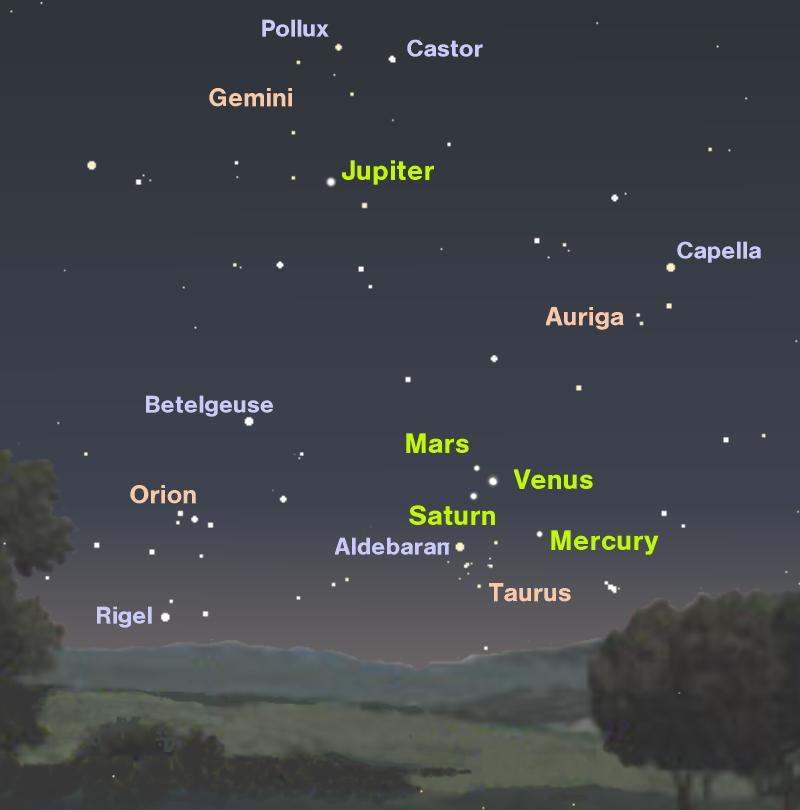 Planets
Planets• Mercury is difficult to see because it is
always close to the sun.
• Venus is white and very bright. It is always
seen right after sunset or right before sunrise,
near the horizon in the direction of the sun.
• Mars is red.
• Jupiter is yellow and very bright.
• Saturn is also yellow, but not as bright as Jupiter.
How to tell the difference between stars and planets?
• Stars stay fixed in their positions relative to one
another. They rise and set a bit earlier each night but
otherwise, in the short term, nothing much changes
about their positions.
• Planets, if you observe them night after night, have
complicated paths that change a lot and they can even appear to change the direction they are moving across the sky.
• Planets almost never twinkle in the sky, whereas stars do.
What are constellations?
 Constellations are patterns of stars shaped
Constellations are patterns of stars shapedlike animals, objects, or people. They are
created by people and they help us find
and identify stars by connecting them into
smaller groups. The constellations visible
in the sky change from month to month
and most historians think farmers originally
created constellations so that they would
know what time of year it was and when to
plant or harvest their crops.The patterns
 people make in the stars and
people make in the stars andthe shapes and meanings hey attribute to them
have changed over
time and differ among various cultures. For
example, the constellation we call the
Big Dipper or URSA MAJOR is
known as the Plough in Great
Britain and it is thought of as a
wagon in Scandinavia. In Holland
they see it as a saucepan, in some
Native American tribes they view the
stars as a bear, and in Hindu Astronomy
they call the stars the Seven Great Sages.
Now constellations have been redefined
so every star in the sky is in exactly one
constellation. In 1929, the International
Astronomical Union (IAU) adopted 88
official constellations.




0 comments:
Post a Comment
IT'S YOUR TURN...
To respond : Drop in just anything but spam. Please don't drop comments just to add your link here. You can use basic HTML tags.
Important : If you're looking for further clarification, advice or support, please address by comment.